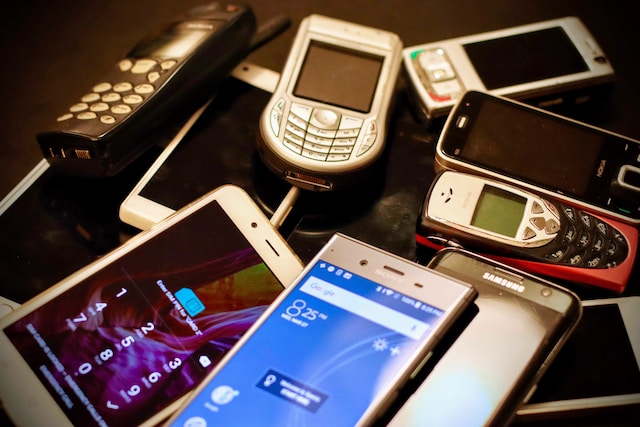Synchronizing your cell phones can be a convenient way to streamline your digital life, seamlessly transferring data between your devices, making important files accessible on any phone you use, and ensuring a smooth transition when upgrading to a new phone. Here is a comprehensive guide on how to sync cell phones, discussing multiple methodologies, and providing you with step-by-step instructions for each.
Syncing via Bluetooth
Bluetooth is a universal technology available in virtually all mobile devices that allows you to wirelessly exchange data over short distances. Here’s how to use it for syncing.
Pair the devices: Open the Bluetooth settings on both phones. Make them discoverable and then search for devices. Once both phones find each other, pair them by confirming the passkey.
Send files: Go to the file you want to share on the source phone. Click on ‘Share’ and select ‘Bluetooth’. Then, choose the target phone from the list of paired devices. The target phone will receive a prompt to accept the file, after which the file transfer will commence.
Receive files: On the target phone, you’ll get a notification once the file transfer is complete. Depending on the file type, it might automatically be saved in the appropriate folder or you may need to manually save it.
Syncing via USB
While Bluetooth is convenient for smaller files, syncing via USB can be faster and more reliable for larger data sets or when syncing multiple files.
Connect the phones: Using a USB-OTG cable, connect the two phones. The phone where the USB cable end is inserted will act as a host.
Choose an action: On the host phone, a prompt will appear asking what you want to do with the connected device. Choose ‘File transfer’.
Transfer files: Open the file manager app on the host phone, locate the files you want to transfer, and copy or move them to the connected phone.
Syncing via Cloud Services
Cloud services like Google Drive, iCloud, and Dropbox allow you to store files online and access them from any device.
Upload files to the cloud: On the source phone, open your preferred cloud service app, select the files you want to sync, and upload them.
Download files from the cloud: On the target phone, open the same cloud service app, locate the files you just uploaded, and download them.
Syncing Contacts and Calendars
Contacts and calendar events can be synchronized using your Google or Apple account.
Sync to account: On the source phone, go to the settings of the Contacts or Calendar app and enable syncing with your Google or Apple account.
Sync from account: On the target phone, add the same Google or Apple account and enable syncing for Contacts and Calendar. Your contacts and calendar events should appear on the target phone.
Syncing App Data
For apps that support it, you can sync app data using your Google or Apple account.
Enable app data syncing: On the source phone, go to your Google or Apple account settings and enable syncing for app data.
Restore app data: On the target phone, after installing the same apps, go to your Google or Apple account settings and choose to restore app data.
Syncing via Phone Clone Apps
Phone clone apps make it easy to transfer all data from one phone to another. Examples include Samsung Smart Switch, Huawei Phone Clone, and Motorola Migrate.
Install the app: Install the phone clone app on both phones.
Start cloning: On the source phone, open the app and select ‘Send data’. On the target phone, select ‘Receive data’.
Select data: On the source phone, select the types of data you want to transfer. This might include contacts, messages, call logs, photos, videos, music, apps, and their data.
Transfer data: Once you’ve selected the data, confirm the transfer. The duration will depend on the amount and type of data being transferred. Ensure both phones remain connected throughout the process.
Finish up: On the target phone, you will receive a notification once the transfer is complete. Check that all data has been successfully transferred. If there are any issues, most apps provide troubleshooting tips or customer support to help resolve them.
Syncing via Near Field Communication (NFC)
Near Field Communication (NFC) is another wireless communication technology that allows data exchange between devices that are a few centimeters apart.
Enable NFC: Go into both phones’ settings and enable NFC and Android Beam (for Android phones) or AirDrop (for iPhones).
Choose files: On the source phone, navigate to the file you want to share.
Start transfer: Put the phones back to back. You should see an option to ‘Beam’ (on Android) or ‘Share’ (on iPhone). Tap this to begin transferring.
Confirm transfer: On the target phone, accept the incoming file. Once accepted, the file will automatically save to the appropriate folder.
Syncing via Wi-Fi Direct
Wi-Fi Direct is a standard that allows for data transfer between devices without the need for a wireless access point.
Enable Wi-Fi Direct: Go to the Wi-Fi settings on both phones and enable Wi-Fi Direct.
Pair devices: Search for and select the other phone to pair with it.
Transfer files: Once paired, you can share files directly via the Wi-Fi Direct option in the ‘Share’ menu of your files.
Final Words
Syncing cell phones can be done through various methods depending on the data type and size, the devices involved, and your personal preferences. Regardless of the method, it’s important to always have a backup of your data before initiating the syncing process. This ensures that you don’t lose any valuable information due to unforeseen issues. Finally, always keep your devices secure during the process to protect your personal information from being intercepted or accessed by unauthorized parties.







